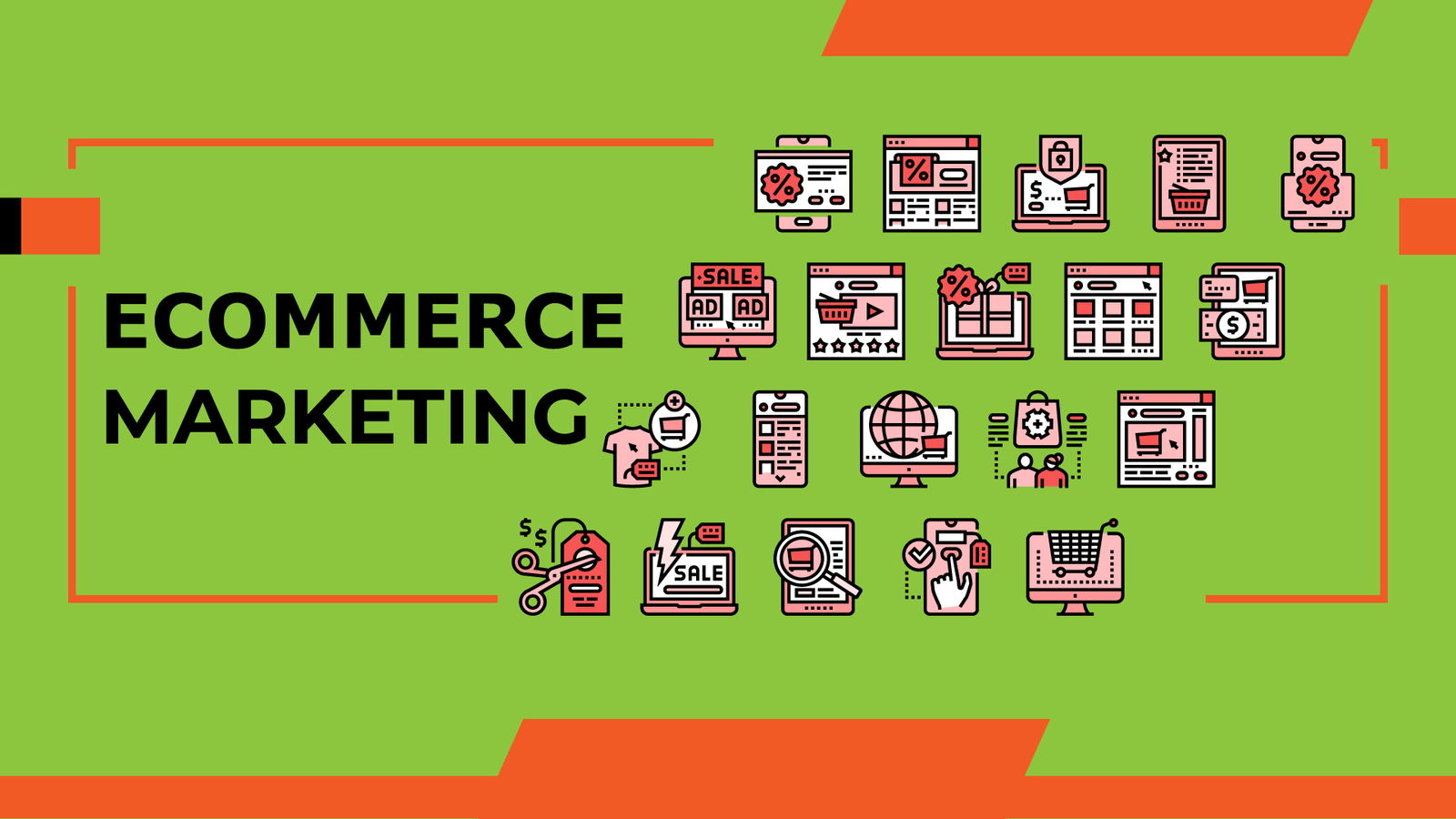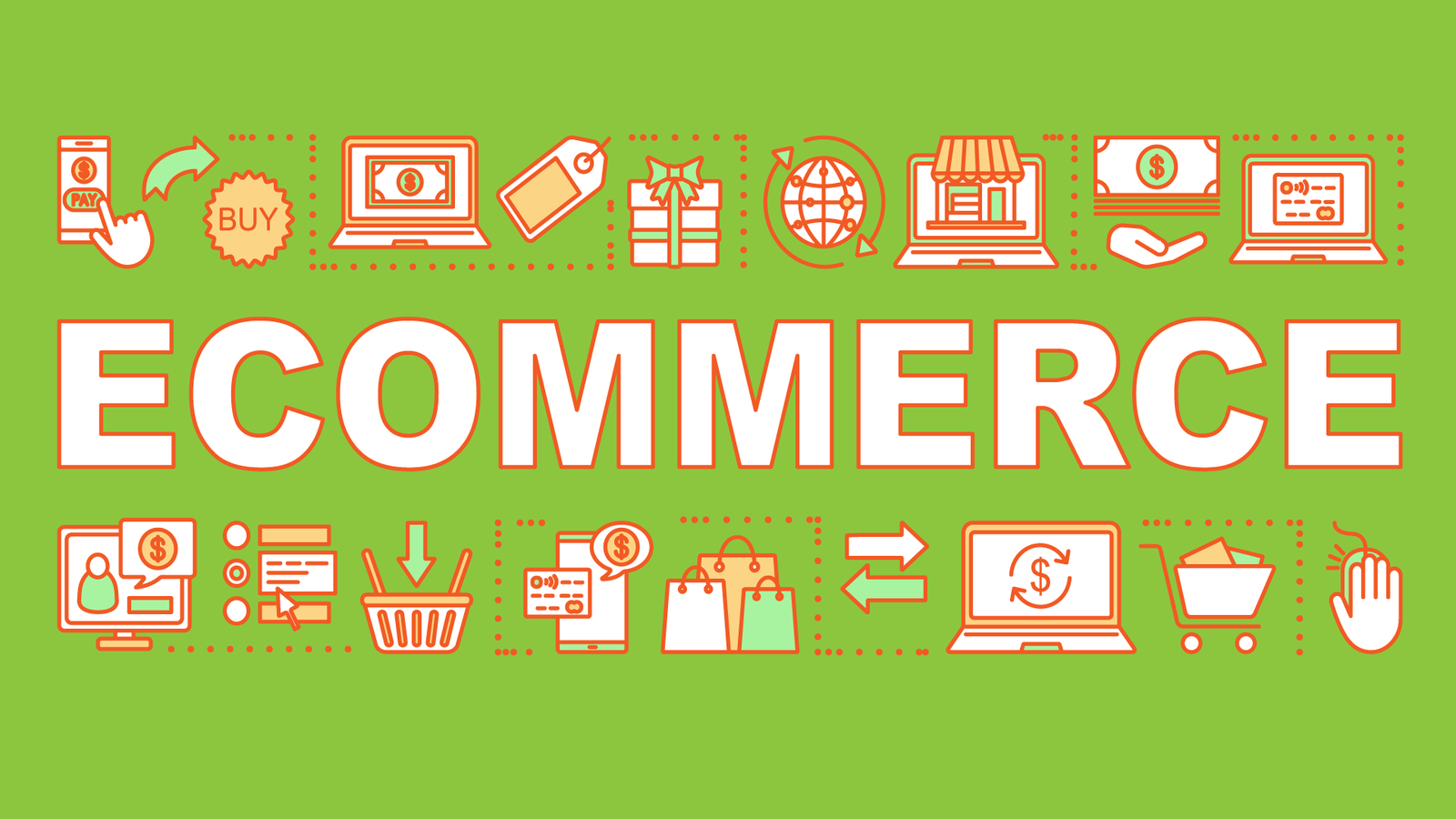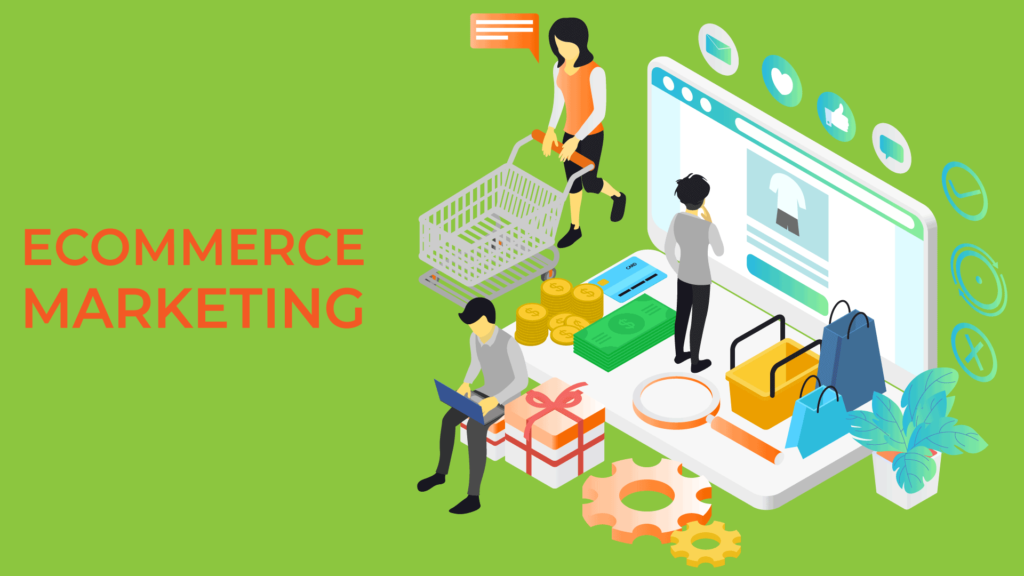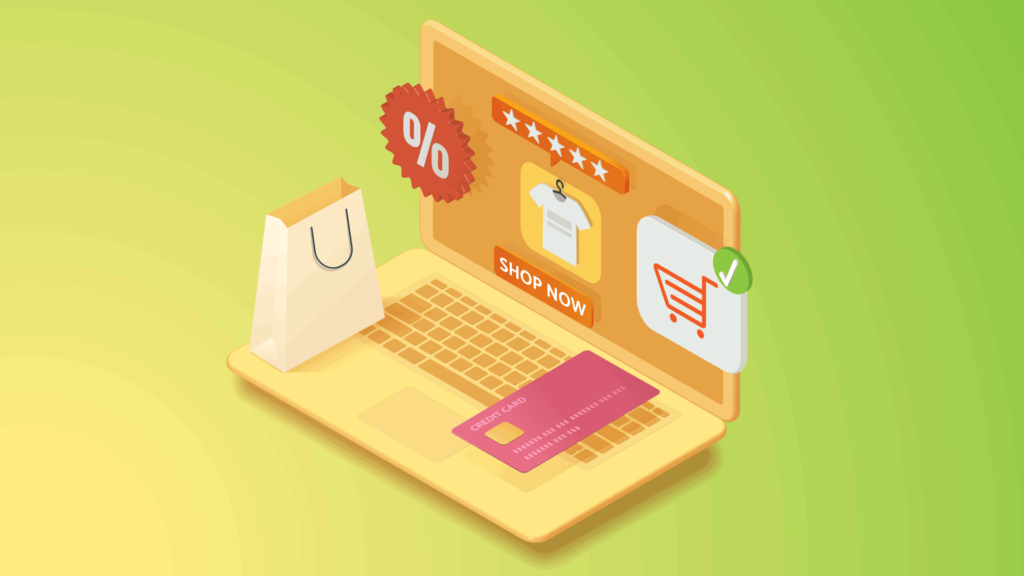
In the ever-evolving landscape of ecommerce, a well-crafted ecommerce marketing strategy is the key to unlocking success. With millions of online stores vying for customers’ attention, it’s no longer enough to simply have a website and hope for the best.
To stand out from the competition, drive conversions, and build a loyal customer base, you need a robust marketing strategy that resonates with your target audience. But, with so many channels, tactics, and tools to choose from, it can be overwhelming to know where to start.
That’s why we’ve distilled the essence of ecommerce marketing into 10 essential steps, designed to help you craft a winning strategy that drives real results. From defining your unique value proposition to measuring and optimizing your campaigns, we’ll take you by the hand and guide you through the process of creating a marketing strategy that will propel your ecommerce business to new heights.
10 ESSENTIAL STEPS TO CRAFTING A WINNING ECOMMERCE MARKETING STRATEGY
In today’s digital landscape, where the online marketplace is more crowded than ever, having a solid ecommerce marketing strategy is no longer a nice-to-have, but a must-have for businesses seeking to thrive in the competitive world of online retail.
With millions of online stores vying for customers’ attention, a well-crafted marketing strategy can be the difference between success and obscurity. It’s the key to unlocking your brand’s full potential, driving website traffic, boosting conversions, and ultimately, growing your revenue.
A winning ecommerce marketing strategy is not just about throwing money at advertising or social media campaigns; it’s about understanding your target audience, identifying their needs, and creating a seamless customer experience that resonates with them. It’s about building a strong brand identity, creating engaging content, and leveraging the right marketing channels to reach your audience.
In this blog post, we’ll take you through the 10 essential steps to crafting a winning ecommerce marketing strategy that drives real results for your business, what is ecommerce marketing and what are the best ecommerce marketing strategies you can use for your ecommerce business.
Step 1: Identify Your Target Audience
Getting to know your target audience is the foundation of a successful ecommerce marketing strategy. It’s the crucial first step in understanding who your ideal customers are, what they want, and how you can persuade them to buy from you.
Without a clear understanding of your target audience, you risk throwing marketing dollars at the wrong people, with the wrong message, at the wrong time.
Think of your target audience as a specific person – let’s call her “Sarah”. Sarah is a 35-year-old busy professional who values convenience, quality, and sustainability. She’s active on social media, loves to read reviews, and is always on the lookout for products that make her life easier. By understanding Sarah’s demographics, behaviors, and pain points, you can tailor your marketing efforts to resonate with her and ultimately drive sales.
To get started, ask yourself some key questions: What are the demographics of my ideal customer? What are their pain points and challenges? What motivates them to buy? What are their preferred communication channels? By answering these questions, you’ll be able to create buyer personas that will guide your marketing strategy and help you connect with your target audience on a deeper level.
Step 2: Set Clear Goals and Objectives
Defining your ecommerce marketing strategy begins with a clear understanding of what you want to achieve. Setting specific, measurable, and attainable goals is crucial to driving success in the online marketplace. Without well-defined objectives, your marketing efforts may lack direction, resulting in a scattered approach that fails to yield meaningful results.
In this crucial step, take the time to assess your business’s current performance, identify areas for improvement, and pinpoint opportunities for growth. Ask yourself: What are my sales targets for the next quarter? Do I want to increase website traffic by a certain percentage? Are there specific product lines or categories I want to promote?
By establishing concrete goals and objectives, you’ll be able to create a roadmap for your marketing strategy, allocate resources effectively, and make data-driven decisions that drive real results. This will also enable you to track progress, measure the success of your marketing initiatives, and make adjustments as needed to stay on course.
Step 3: Develop a Unique Value Proposition
In a crowded ecommerce landscape, it’s crucial to differentiate your brand from the competition. This is where a Unique Value Proposition (UVP) comes into play. A UVP is a clear statement that explains how your products or services solve a specific problem or meet a particular need for your target audience. It’s what sets you apart from the rest and gives customers a compelling reason to choose you over others.
Think of your UVP as a promise to your customers. It’s the answer to the question, “Why should I buy from you?” A well-crafted UVP should resonate with your target audience, highlight your brand’s strengths, and create an emotional connection with potential customers.
For example, Warby Parker’s UVP is “Home Try-On” – a convenient and risk-free way to try glasses at home before buying. This unique value proposition has disrupted the traditional eyewear industry and has become a key differentiator for the brand.
Developing a UVP requires a deep understanding of your target audience, their pain points, and what drives their purchasing decisions. By identifying what makes your brand unique and communicating that value effectively, you’ll be able to attract and retain customers, drive conversions, and ultimately, grow your ecommerce business.
Step 4: Choose the Right Marketing Channels
Now that you have a solid understanding of your target audience and their needs, it’s time to decide which marketing channels will best reach and engage them.
With so many options available, it’s crucial to choose the channels that align with your business goals and resonate with your audience. Are your customers more likely to be found on social media, or do they prefer to receive newsletters and promotional emails?
Perhaps they’re more likely to stumble upon your brand through influencer partnerships or paid advertising. Whatever the case, it’s essential to prioritize the channels that will drive the most ROI for your business.
For instance, if your target audience is primarily young adults, you may want to focus on Instagram and TikTok, while a B2B audience may be more receptive to LinkedIn and email marketing. By selecting the right channels, you’ll be able to effectively allocate your resources and maximize your marketing efforts.
Step 5: Create Engaging Content and Product Descriptions
When it comes to crafting a winning ecommerce marketing strategy, the content you create can make all the difference. Your product descriptions and content are often the first impression customers have of your brand, and they can be the deciding factor in whether or not a customer makes a purchase. That’s why it’s essential to create engaging, high-quality content that resonates with your target audience.
Think about it: when you’re browsing an online store, what draws you in? Is it the sleek product images, the detailed product descriptions, or the customer reviews? It’s likely a combination of all three. But without compelling content, you risk losing customers to your competitors.
Gone are the days of simply listing features and benefits; today’s customers crave storytelling, personality, and authenticity.
Your content should be informative, yet entertaining. It should speak to your brand’s unique voice and tone, while also addressing the needs and pain points of your target audience. By creating content that resonates, you can build trust, establish your brand as an authority in your industry, and drive sales. So, take the time to craft product descriptions that are more than just a list of features.
Tell a story, highlight the benefits, and showcase your brand’s personality. Your customers will thank you, and so will your bottom line.
Step 6: Optimize Your Website for Conversion
When it comes to converting browsers into buyers, every detail counts. Your website is the digital storefront of your ecommerce business, and it’s where the magic of conversion happens. Optimizing your website for conversion is crucial to turning visitors into paying customers. This is where the rubber meets the road, and all your marketing efforts come to fruition.
Think of your website as a sales funnel, guiding visitors through a seamless and intuitive journey from landing page to checkout. Every element, from the layout and design to the content and calls-to-action, should be carefully crafted to remove friction and encourage conversion.
This means ensuring that your website is mobile-friendly, loads quickly, and has a clear and concise value proposition that resonates with your target audience.
By streamlining the user experience, reducing cognitive load, and making it easy for visitors to find what they’re looking for, you can significantly boost conversion rates and ultimately drive revenue growth. In this step, we’ll dive into the nitty-gritty of website optimization, from A/B testing and heatmap analysis to streamlining checkout processes and crafting compelling product pages. By the end of this step, you’ll have a conversion-optimized website that’s primed to turn visitors into loyal customers.
Step 7: Leverage Email Marketing and Automation
Email marketing is a goldmine for ecommerce businesses, and when done right, it can be a powerful tool to drive conversions, nurture customer relationships, and increase loyalty. However, with the average person receiving over 100 emails per day, it’s crucial to stand out from the noise and deliver targeted, personalized messages that resonate with your audience.
This is where email automation comes in – a game-changer for ecommerce marketers. By automating repetitive tasks and workflows, you can focus on creating high-quality content and building meaningful relationships with your customers. With email automation, you can set up triggered campaigns that respond to specific customer behaviors, such as abandoned cart reminders, welcome series, and loyalty rewards.
For instance, you can create a workflow that sends a series of emails to new subscribers, introducing them to your brand, showcasing your best-selling products, and offering exclusive discounts. Or, you can set up a cart abandonment campaign that sends a reminder email with a special offer to customers who left items in their cart.
By leveraging email marketing and automation, you can increase engagement, drive revenue, and build a loyal customer base that will fuel your ecommerce business for long-term success.
Step 8: Run Targeted Paid Advertising Campaigns
As you’ve successfully laid the groundwork for your ecommerce marketing strategy, it’s time to supercharge your efforts with targeted paid advertising campaigns. This is where you’ll reach new heights of customer acquisition and revenue growth.
With paid advertising, you’ll be able to tap into a vast pool of potential customers who are actively searching for products like yours. By targeting specific demographics, interests, and behaviors, you’ll increase the likelihood of attracting high-quality leads that are more likely to convert into sales.
Imagine being able to reach customers who have abandoned their shopping carts, or those who have shown interest in a specific product category. With targeted paid advertising, you can re-engage these customers and nudge them closer to making a purchase.
You can also target lookalike audiences, which are groups of people who resemble your existing customers, increasing the chances of attracting new customers who are similar to your best ones.
By leveraging platforms like Google Ads, Facebook Ads, and Instagram Ads, you’ll be able to create targeted campaigns that drive real results. With the right ad creative, compelling copy, and optimized bidding strategies, you’ll be able to maximize your return on ad spend (ROAS) and drive sustainable growth for your ecommerce business.
Step 9: Measure and Analyze Your Performance
In the fast-paced world of ecommerce, it’s easy to get caught up in the excitement of launching new campaigns and promotions. But, without taking a step back to measure and analyze your performance, you’re essentially flying blind.
You may be throwing money at strategies that aren’t yielding the desired results, or worse, neglecting areas that are ripe for optimization.
That’s why Step 9 is all about tracking your progress, identifying areas for improvement, and making data-driven decisions to fuel your marketing strategy. By setting up a robust analytics system, you’ll be able to monitor key performance indicators (KPIs) such as website traffic, conversion rates, average order value, and customer lifetime value.
With this data at your fingertips, you’ll be able to pinpoint what’s working and what’s not, and make adjustments to your strategy on the fly. Are your social media ads driving sales, or are they simply generating empty clicks? Is your email marketing campaign resonating with customers, or are they hitting the delete button? By measuring and analyzing your performance, you’ll be able to answer these questions and make informed decisions that drive real growth and revenue.
Step 10: Continuously Refine and Improve Your Strategy
The final step in crafting a winning ecommerce marketing strategy is perhaps the most crucial: continuously refining and improving your approach. In today’s fast-paced digital landscape, what works today may not work tomorrow.
Consumer behaviors, market trends, and algorithms are constantly evolving, and your strategy must adapt to stay ahead of the curve.
Think of your marketing strategy as a living, breathing entity that requires regular nurturing and attention. Set aside time to analyze your performance data, identify areas of improvement, and adjust your tactics accordingly.
Ask yourself questions like: What’s driving the most conversions? Which channels are underperforming? Are there new opportunities to explore?
By regularly refining your strategy, you’ll be able to stay agile, capitalize on new opportunities, and make data-driven decisions that drive real results. This might involve tweaking your ad targeting, refreshing your content calendar, or exploring new channels like influencer marketing or social commerce.
The key is to remain curious, stay open to change, and be willing to pivot when necessary. By doing so, you’ll ensure that your ecommerce marketing strategy remains a winning one, even in the face of an ever-changing market.

ESSENTIAL ECOMMERCE MARKETING STRATEGIES
In the cutthroat world of ecommerce, a well-crafted local internet marketing strategy is the key to unlocking success. With millions of online stores vying for attention, it’s no longer enough to simply have a website and hope for the best.
To truly stand out from the competition, you need a carefully curated blend of tactics that drive traffic, convert browsers into buyers, and build brand loyalty. But, with so many marketing channels to choose from, it can be overwhelming to determine which ones will yield the best results for your business. That’s why we’re here to help you craft the perfect blend of best ecommerce marketing strategies that will drive real results and take your online store to the next level.
Whether you’re a seasoned pro or just starting out, this guide will walk you through the essential elements of a winning ecommerce marketing strategy, and provide you with the tools and insights you need to drive growth, increase conversions, and build a loyal customer base.
Content Ecommerce Marketing Strategy
When it comes to crafting a winning ecommerce marketing strategy, content is king. High-quality, engaging content is the backbone of any successful online store, and it’s essential to get it right.
Your content is what sets your brand apart from the competition, builds trust with your customers, and ultimately drives sales. A well-crafted content ecommerce marketing strategy involves creating a variety of content types, including blog posts, product descriptions, social media posts, and email newsletters, that are all carefully designed to resonate with your target audience.
This means understanding your customers’ pain points, interests, and motivations, and creating content that speaks directly to them. By doing so, you’ll be able to build a loyal community of customers who will not only make purchases from your store but also become brand advocates, helping to spread the word about your business.
Whether you’re creating in-depth product guides, showcasing customer testimonials, or sharing behind-the-scenes glimpses of your brand, your content should be informative, entertaining, and above all, authentic. By prioritizing content in your ecommerce marketing strategy, you’ll be able to drive more traffic, increase conversions, and ultimately, grow your online business.
Social Media Ecommerce Marketing Strategy
In today’s digital landscape, social media is an indispensable channel for ecommerce businesses to connect with their target audience, build brand awareness, and drive sales. A well-crafted social media ecommerce marketing strategy can help you reach and engage with potential customers, increase website traffic, and ultimately, boost conversions.
Imagine being able to showcase your products in a visually appealing way, share behind-the-scenes content, and interact with customers in real-time, all while driving sales and revenue. With social media platforms like Facebook, Instagram, and Pinterest, you can create a seamless shopping experience that takes customers from browsing to buying.
By leveraging the power of social media and social media marketing plan template, you can build a loyal community of customers who will advocate for your brand and drive long-term growth. With the right social media ecommerce marketing strategy, you can turn your online store into a thriving hub of activity, where customers can discover, engage, and buy from your brand.
Email Ecommerce Marketing Strategy
In today’s digital age, a well-crafted email marketing strategy is a crucial component of a winning ecommerce marketing mix. It’s a powerful way to nurture relationships with customers, drive conversions, and build brand loyalty.
When done right, email marketing can be a major revenue driver for your online store, allowing you to reach customers at every stage of the buying journey. From welcoming new subscribers to abandoned cart reminders, email marketing offers a multitude of opportunities to engage with customers and encourage them to take action.
By segmenting your email list, personalizing your content, and optimizing your campaigns for mobile, you can create a highly effective email marketing strategy that drives real results for your ecommerce business. With the ability to automate and schedule emails, you can also save time and resources, making it an efficient and cost-effective way to reach your target audience.
By incorporating email marketing into your overall ecommerce strategy, you can create a seamless customer experience that sets your brand apart from the competition.
Search Engine Optimization (Seo) For Ecommerce Marketing Strategy
When it comes to crafting a winning ecommerce marketing strategy, search engine optimization (SEO) is a crucial component that cannot be overlooked. By optimizing your online store for search engines, you can increase your visibility, drive more organic traffic, and ultimately boost sales.
Imagine having a storefront that’s open 24/7, with millions of potential customers walking through the door every day. That’s what SEO can do for your ecommerce business. By optimizing your product pages, category pages, and content with relevant keywords, you can improve your search engine rankings and drive more targeted traffic to your site.
This means that when customers search for products like yours, your store will be at the top of the list, making it more likely that they’ll click through and make a purchase. Moreover, SEO is a cost-effective marketing strategy that can produce long-term results, making it a valuable investment for any ecommerce business. By incorporating SEO into your ecommerce marketing strategy, you can stay ahead of the competition, increase conversions, and take your online store to the next level.
Pay-Per-Click Advertising For Ecommerce Marketing Strategy
In the world of ecommerce marketing, Pay-Per-Click (PPC) advertising is a powerful tool that can help drive traffic, boost conversions, and increase sales. With PPC, you can target specific keywords and demographics to reach potential customers who are actively searching for products like yours.
By creating a well-crafted PPC campaign, you can ensure that your ads are seen by the right people at the right time, driving them to your website and encouraging them to make a purchase. But, with so many options and settings to navigate, it can be overwhelming to get started.
That’s why it’s essential to understand the ins and outs of PPC advertising, including how to set up and optimize your campaigns, write compelling ad copy, and track your results. By mastering PPC, you can unlock a steady stream of targeted traffic and take your ecommerce business to the next level.
Affiliate Ecommerce Marketing Strategy
As you navigate the complex landscape of ecommerce marketing, one strategy stands out as a potent game-changer: affiliate marketing.
This powerful approach allows you to tap into the vast networks of influencers, bloggers, and social media personalities who have already built a loyal following. By partnering with these affiliates, you can expand your reach, drive conversions, and boost sales.
With an affiliate marketing strategy, you can incentivize your partners to promote your products to their audience, leveraging their credibility and trust to drive sales. Influencer marketing is a smart way to accelerate your ecommerce business online. It helps you reach new audiences, build brand awareness, and work with creators that make sales for you.
This symbiotic relationship not only benefits your brand but also rewards your affiliates with commissions for each sale generated through their unique referral link. By carefully selecting the right affiliates, setting clear goals and expectations, and providing them with the necessary tools and support, you can craft a winning affiliate marketing strategy that drives real results for your ecommerce business.
Promos, Discounts And Events For For Ecommerce Marketing Strategy
In the world of ecommerce, one of the most effective ways to drive sales, boost customer engagement, and stay ahead of the competition is by incorporating promos, discounts, and events into your marketing strategy.
These tactics have the power to create a sense of urgency, incentivize purchases, and foster a sense of community among your customers. Imagine offering a limited-time discount on a best-selling product, hosting a flash sale to clear out inventory, or creating a loyalty program that rewards repeat customers. By strategically timing and promoting these events, you can create a buzz around your brand, drive conversions, and ultimately, increase revenue.
Additionally, events like holiday sales, product launches, and exclusive offers can help you connect with your customers on a deeper level, building brand loyalty and advocacy. By weaving these elements into your ecommerce marketing strategy, you can create a winning formula that sets your brand apart from the rest and drives business growth.
The Use Of AI For For Ecommerce Marketing Strategy
In today’s digital landscape, the key to unlocking a winning ecommerce marketing strategy lies in harnessing the power of Artificial Intelligence (AI). This revolutionary technology has the ability to transform the way you approach marketing, allowing you to make data-driven decisions, automate tedious tasks, and personalize customer experiences like never before.
With AI, you can analyze vast amounts of customer data, identifying patterns and trends that would be impossible to detect manually. This enables you to craft targeted marketing campaigns that resonate with your audience, drive conversions, and ultimately, boost revenue.
Moreover, AI-powered chatbots can help you provide 24/7 customer support, ensuring that your customers receive timely and personalized responses to their queries. By leveraging AI in your ecommerce marketing strategy, you can stay ahead of the competition, drive growth, and propel your online store towards success.

CONCLUSION
As we’ve navigated the 10 essential steps to crafting a winning ecommerce marketing strategy, it’s clear that success in the online marketplace requires a multifaceted approach. From defining your target audience to optimizing your website for conversions, each step builds upon the last to create a cohesive and effective strategy.
By understanding your customers’ needs, creating engaging content, and leveraging the power of social media, email marketing, and paid advertising, you’ll be well on your way to driving traffic, boosting sales, and building a loyal customer base.
But remember, a winning ecommerce marketing strategy is not a set-it-and-forget-it proposition. It’s a dynamic, ongoing process that requires continuous monitoring, analysis, and adaptation to stay ahead of the competition. By putting it all together and staying committed to your strategy, you’ll be able to drive real results and achieve long-term ecommerce success.
With these 10 essential steps, you now have the roadmap to crafting a winning ecommerce marketing strategy that drives sales, boosts conversions, and sets your online store apart from the competition. By implementing these actionable tips, you’ll be well on your way to creating a loyal customer base, increasing brand awareness, and ultimately, growing your ecommerce business.
Remember, a successful marketing strategy is not a one-time feat, but an ongoing process that requires continuous optimization and improvement. Stay ahead of the curve, and get ready to watch your ecommerce business thrive!



